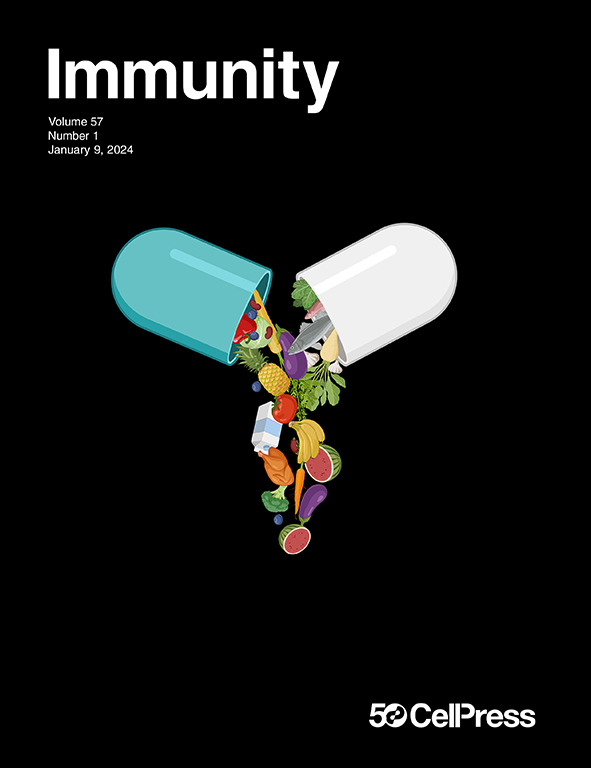Apolipoprotein E aggregation in microglia initiates Alzheimer’s disease pathology by seeding β-amyloidosis
IF 25.5
1区 医学
Q1 IMMUNOLOGY
引用次数: 0
Abstract
The seeded growth of pathogenic protein aggregates underlies the pathogenesis of Alzheimer’s disease (AD), but how this pathological cascade is initiated is not fully understood. Sporadic AD is linked genetically to apolipoprotein E (APOE) and other genes expressed in microglia related to immune, lipid, and endocytic functions. We generated a transgenic knockin mouse expressing HaloTag-tagged APOE and optimized experimental protocols for the biochemical purification of APOE, which enabled us to identify fibrillary aggregates of APOE in mice with amyloid-β (Aβ) amyloidosis and in human AD brain autopsies. These APOE aggregates that stained positive for β sheet-binding dyes triggered Aβ amyloidosis within the endo-lysosomal system of microglia, in a process influenced by microglial lipid metabolism and the JAK/STAT signaling pathway. Taking these observations together, we propose a model for the onset of Aβ amyloidosis in AD, suggesting that the endocytic uptake and aggregation of APOE by microglia can initiate Aβ plaque formation.

小胶质细胞中载脂蛋白 E 的聚集通过播散 β 淀粉样蛋白沉积引发阿尔茨海默病的病理变化
致病蛋白聚集体的种子生长是阿尔茨海默病(AD)发病机制的基础,但这一病理级联是如何启动的还不完全清楚。散发性阿兹海默病在遗传学上与载脂蛋白 E(APOE)和其他在小胶质细胞中表达的与免疫、脂质和内细胞功能相关的基因有关。我们生成了表达 HaloTag 标记 APOE 的转基因基因敲除小鼠,并优化了生化纯化 APOE 的实验方案,这使我们能够在淀粉样蛋白-β(Aβ)淀粉样变性小鼠和人类 AD 脑尸检中鉴定出 APOE 的纤维状聚集体。这些对β片状结合染料染色呈阳性的APOE聚集体引发了小胶质细胞内溶酶体系统中的β淀粉样变性,这一过程受到小胶质细胞脂质代谢和JAK/STAT信号通路的影响。综合这些观察结果,我们提出了AD中Aβ淀粉样变性的发病模型,认为小胶质细胞对APOE的内摄和聚集可启动Aβ斑块的形成。
本文章由计算机程序翻译,如有差异,请以英文原文为准。
求助全文
约1分钟内获得全文
求助全文
来源期刊

Immunity
医学-免疫学
CiteScore
49.40
自引率
2.20%
发文量
205
审稿时长
6 months
期刊介绍:
Immunity is a publication that focuses on publishing significant advancements in research related to immunology. We encourage the submission of studies that offer groundbreaking immunological discoveries, whether at the molecular, cellular, or whole organism level. Topics of interest encompass a wide range, such as cancer, infectious diseases, neuroimmunology, autoimmune diseases, allergies, mucosal immunity, metabolic diseases, and homeostasis.
 求助内容:
求助内容: 应助结果提醒方式:
应助结果提醒方式:


